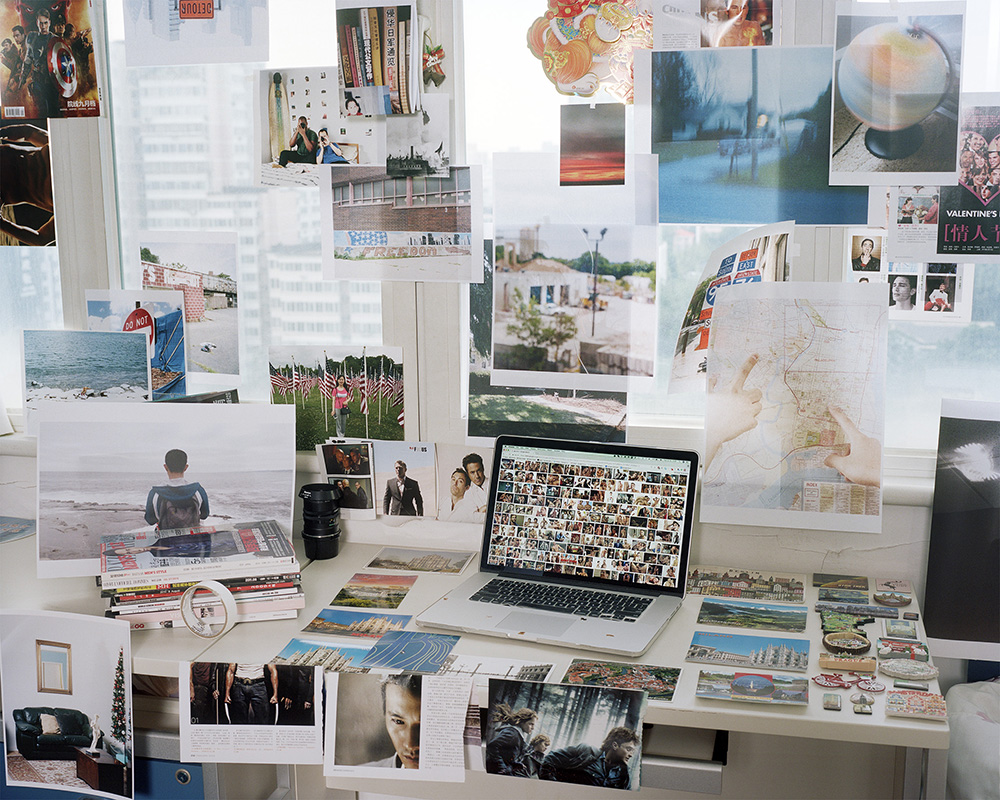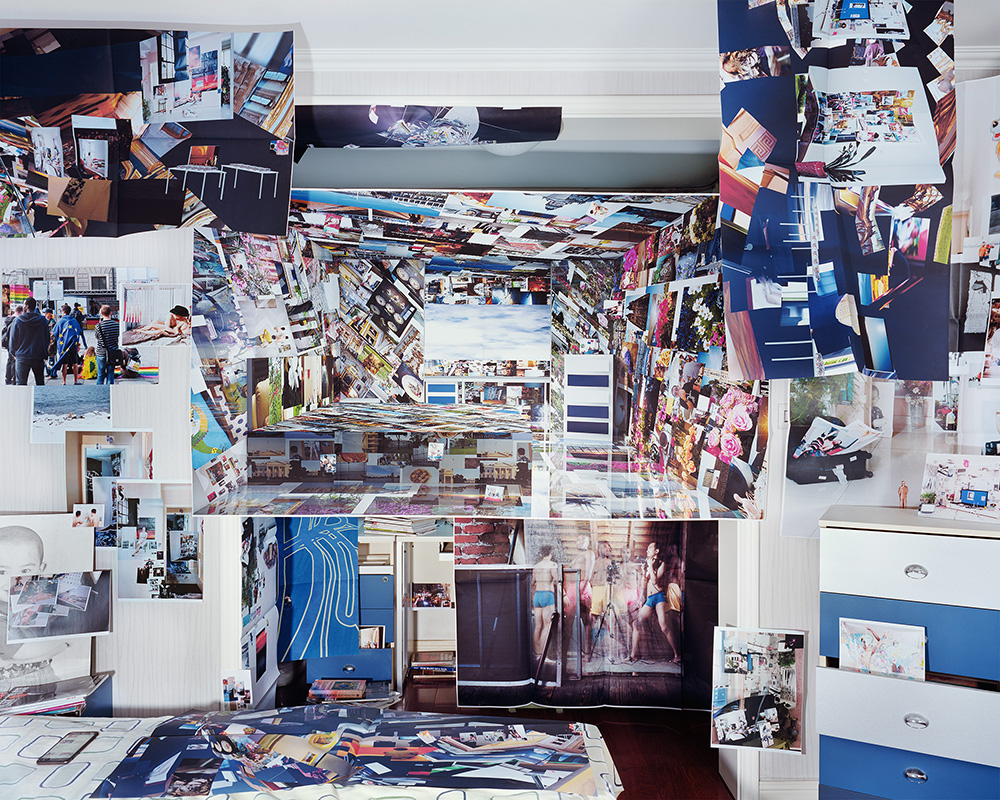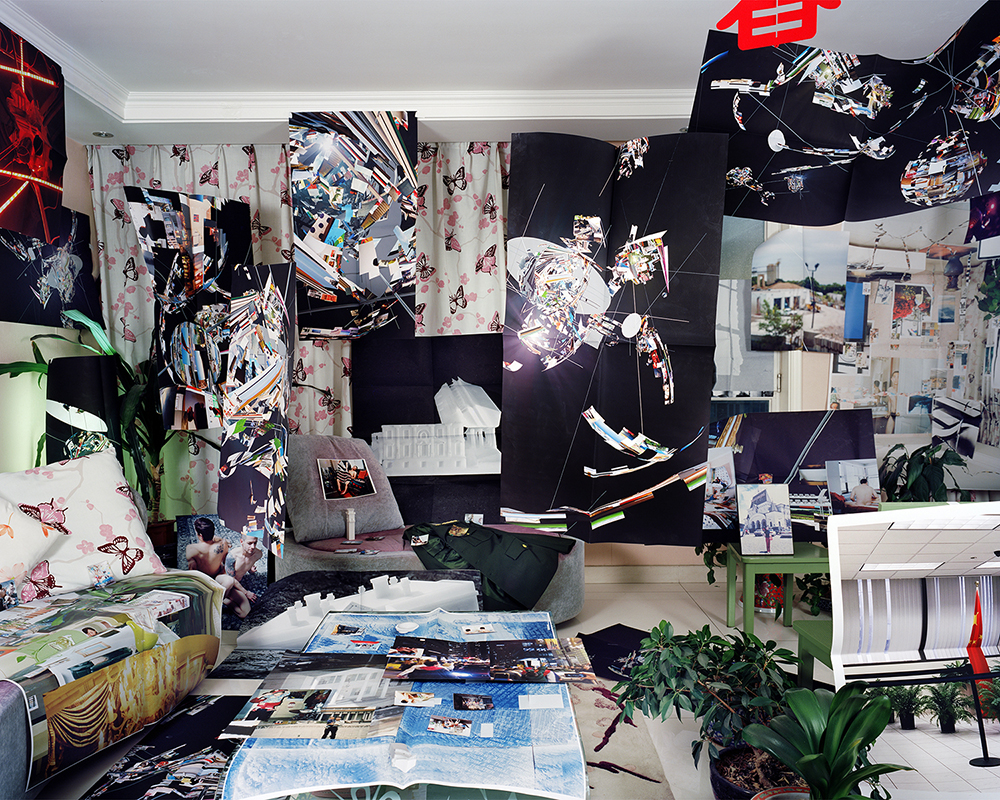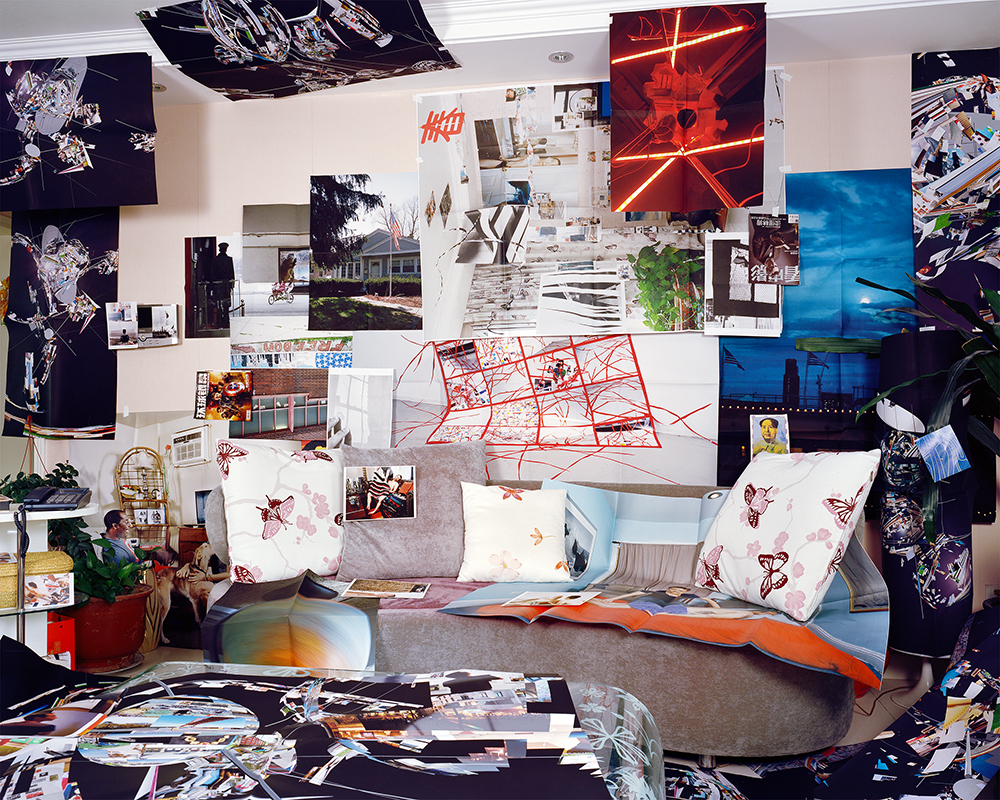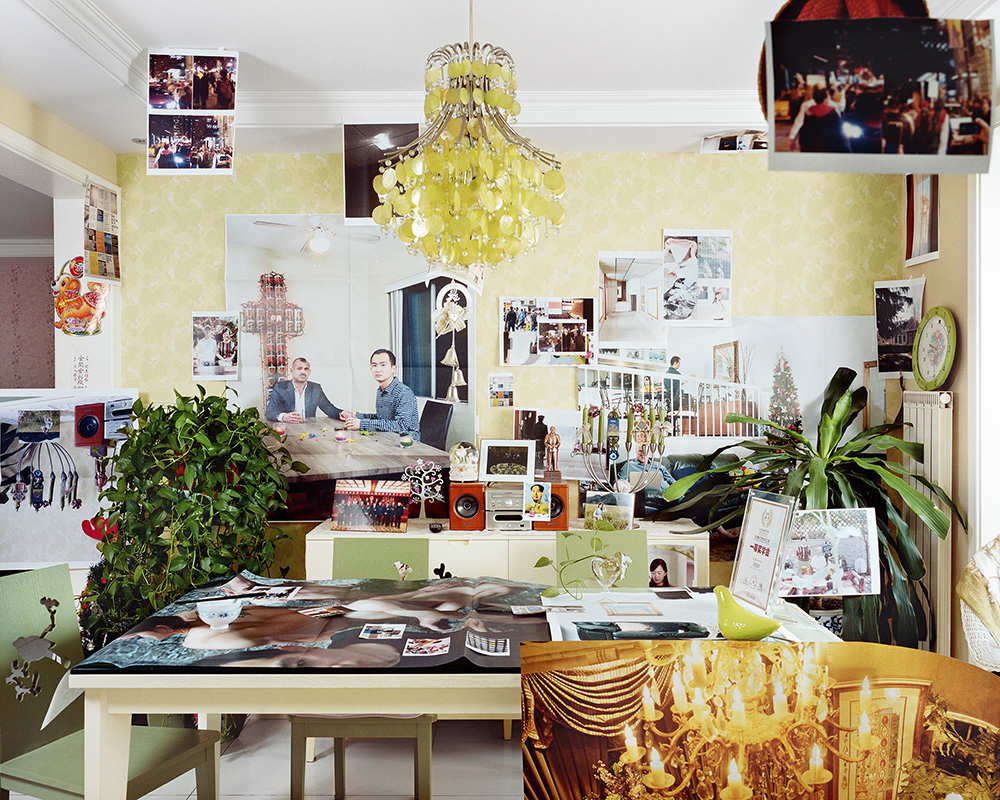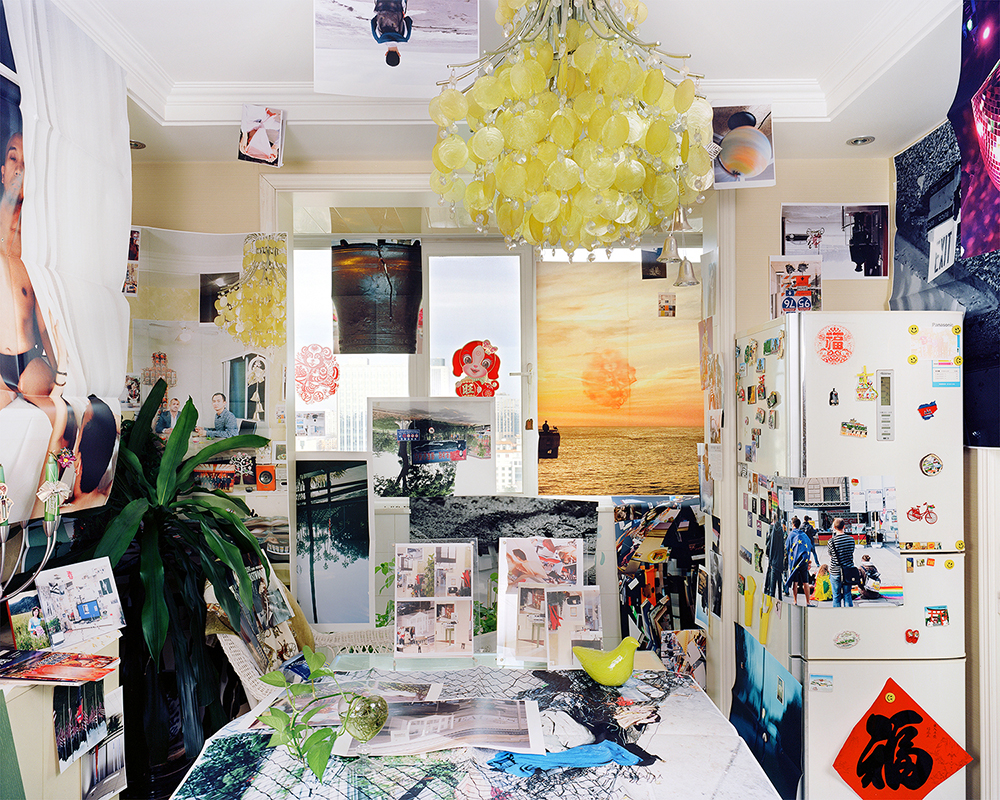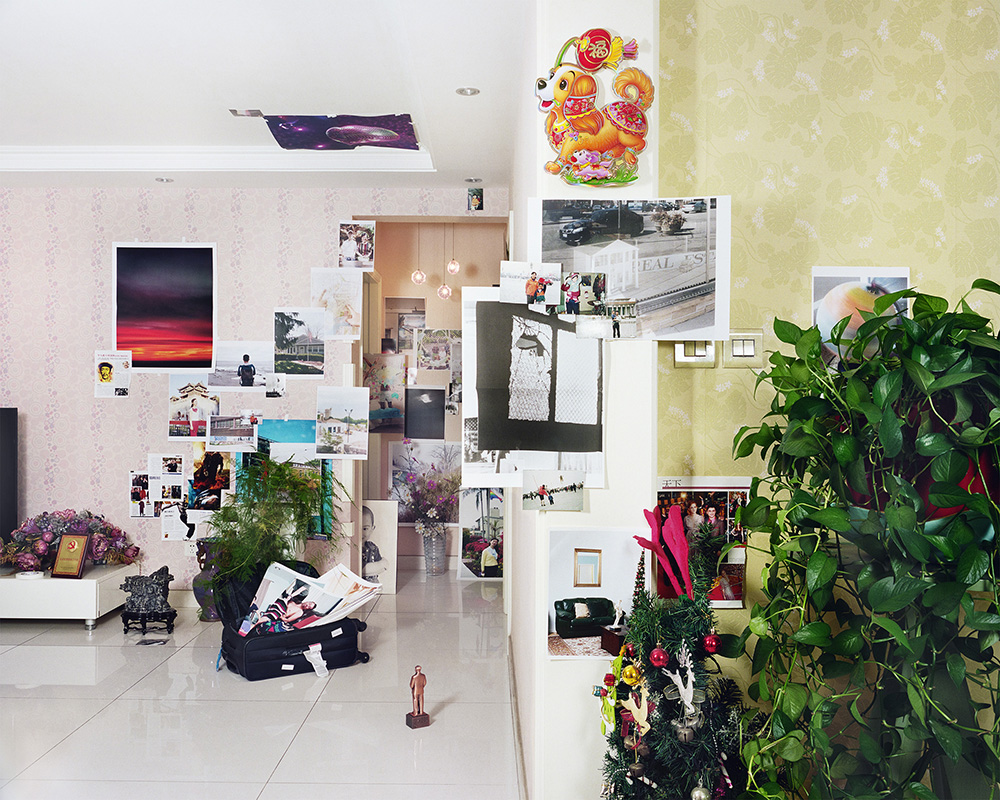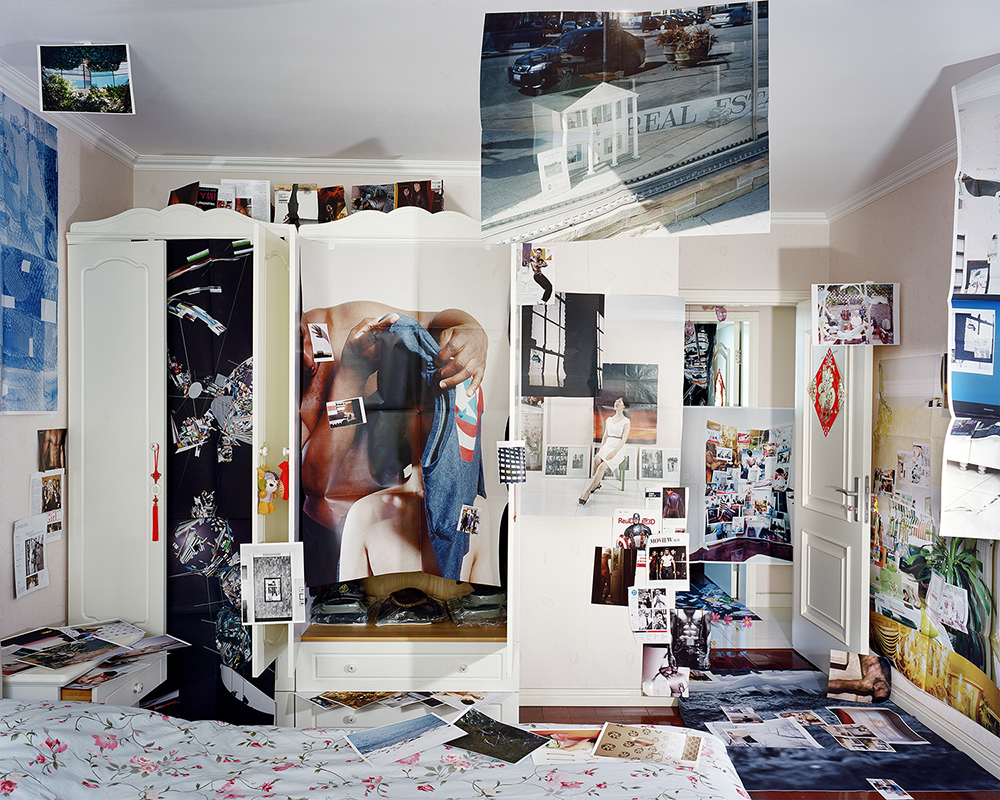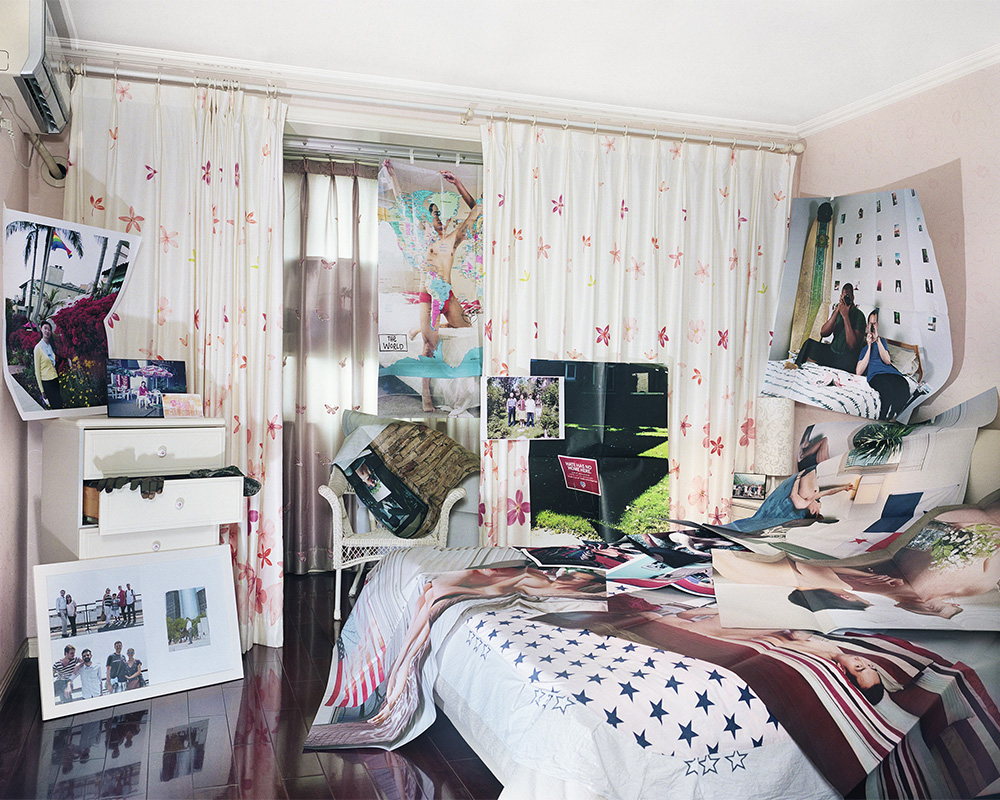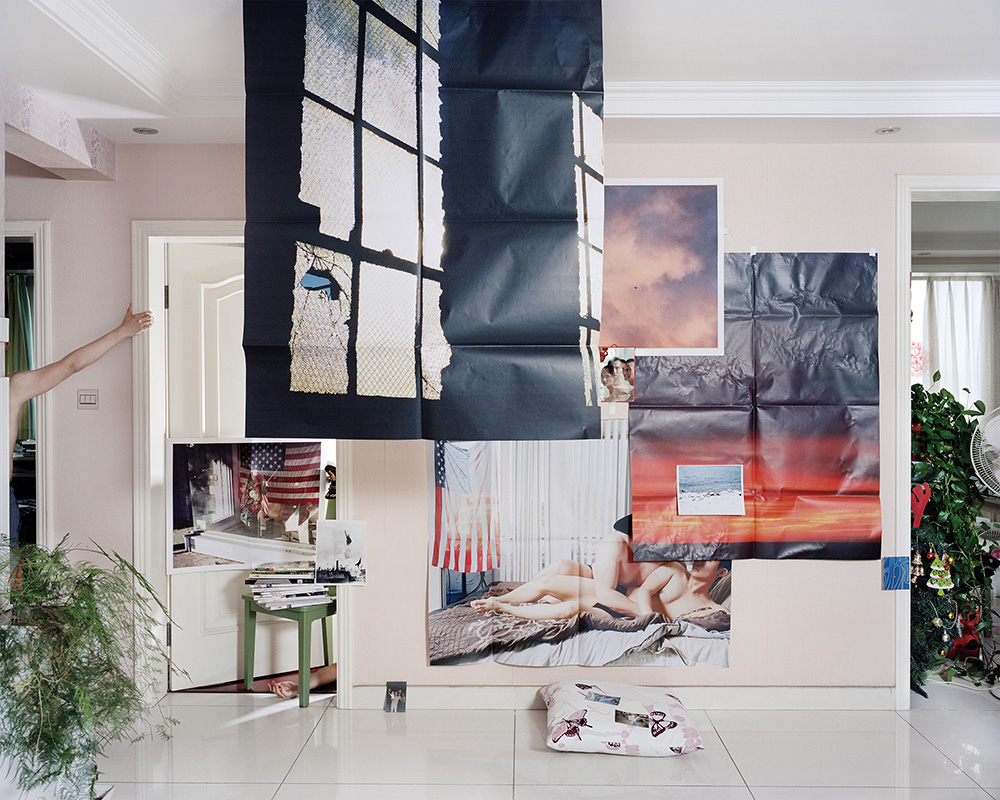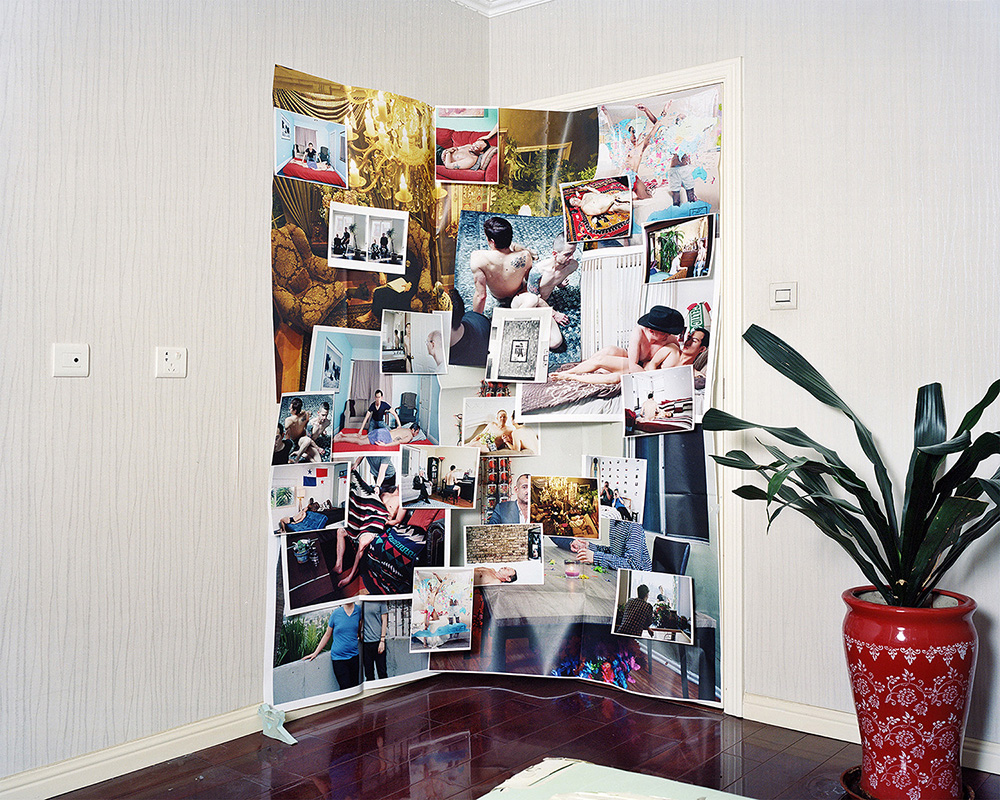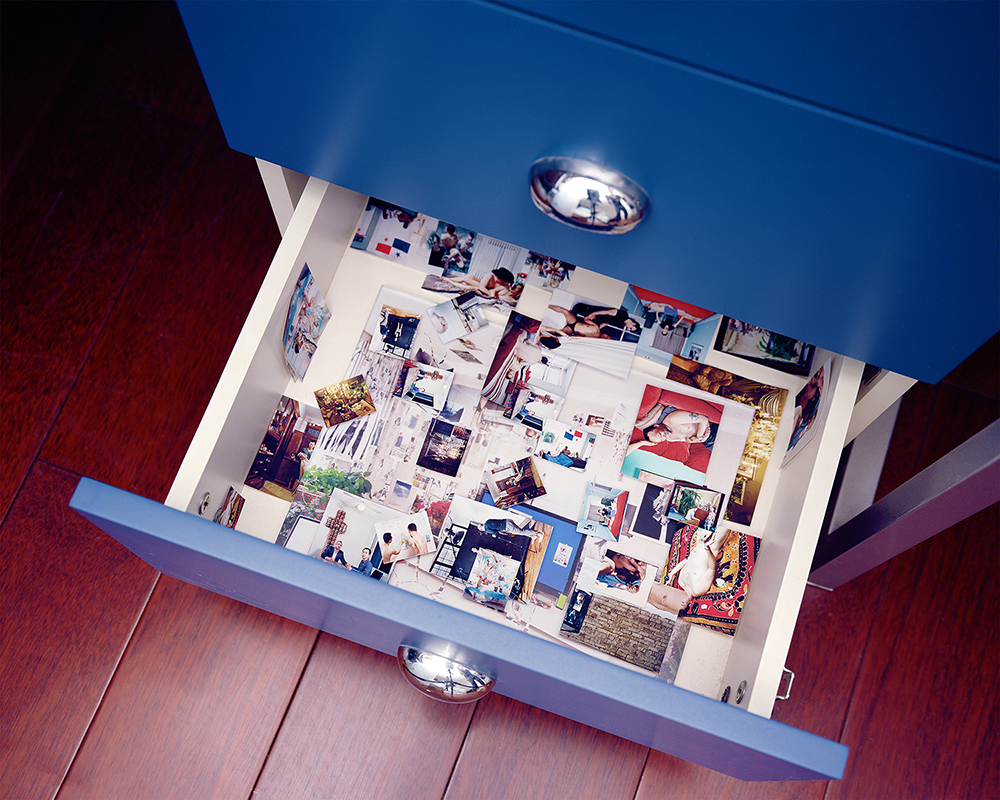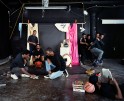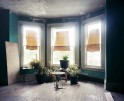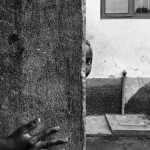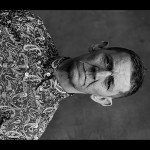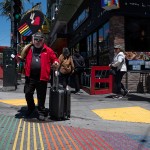2019 Lenscratch Student Prize: First Place: Guanyu Xu
It is with great excitement that we honor Guanyu Xu, School of the Art Institute of Chicago, MFA – 2019, with First Place in the 2019 Lenscratch Student Awards. As the winner, he will receive a $1000 Cash Award and a feature on Lenscratch, a year long mentorship with Aline Smithson, a THINK TANK camera bag, a $500 Gift Certificate towards a Los Angeles Center of Photography Workshop, a $500 Gift Certificate towards a Santa Fe Photo Workshop, a $500 Gift Certificate from Freestyle Photo Supplies a mini exhibition on the Curated Fridge, a collection of books from Yoffy Press, a collection of books from Kris Graves Projects, a Supporting Level membership with CENTER, plus a listing online and a consult with Angie Rizzo, a Lenscratch T-Shirt and tote. Thank you so much to our sponsors and to our jurors: Aline Smithson, Shawn Bush, Daniel George, Sarah Stankey, Drew Nikonowicz, Brennan Booker, and Julia Bennett.
His project, Temporarily Censored Home, is a series of complex and brazen installations, created in his family home to artistically protest political and personal systems that suppress individuals. I interviewed Guanyu sometime back so am rerunning some of our conversation in addition to some new questions.
徐冠宇 Guanyu Xu (b.1993 Beijing) is an artist currently based in Chicago. He was the recipient of the Fred Endsley Memorial Fellowship and the James Weinstein Memorial Fellowship. He is the Runner-up of the 2019 Aperture Foundation Portfolio Prize.
His works have been exhibited internationally including the Aperture Foundation, New York; ICP Museum, New York; Format Photo Festival, UK; The Union League Club of Chicago, Chicago; Mint Museum, Charlotte, and others. His works have been featured in numerous publications including Aint-Bad Magazine, Musée Magazine, Der Greif, and China Photographic Publishing House.
Temporarily Censored Home
In Temporarily Censored Home, I covertly situated photographs in my teenage home in Beijing to queer the normativity of my parents’ heterosexual space. These images taken in the past four years consist of portraits of me and other gay men in their domestic settings from my project “One Land To Another”; prints of my artwork made in the U.S.; photographs of landscape and built environment taken in the United States, Europe, and China; torn pages from film and fashion magazines that I collected as a teenager; images from my family photo albums. Through positioning and layering images, I aim to juxtapose, contradict, and collapse space and time, disrupting my teenage home. It bridges the relationship between personal and political in the context of the oppressive systems of both China and the US. Even though these installations were not permanent, I reclaimed my home in Beijing as a queer space of freedom and temporary protest.
I was born and raised in a conservative family in Beijing, China, where expressions of overt non-heteronormative behavior were forbidden. My father is a military officer and my mother is a civil servant. Both of them still do not know I’m gay. Growing up in China with limited representation of LGBTQ people, I turned my attention to Western films and fashion that were dominated by representations of white masculine men. As a teenager, my exposure to American culture through films and TV shows planted an American Dream within me. Thus, the juxtaposition of torn pages from film and fashion magazines that attracted me during my teenage years and staged self-portraits with other gay men in the U.S creates a self-reflective relationship between the image production of power and my investigation of the intersectionality of race and sexuality.
My teenage home is a place where my identity is formed. My mother’s floral interior design and my father’s highly organized space construct a middle-class heterosexual space. I openly collected film and fashion magazines in this space. But only I knew that I secretly understood my sexuality through them. This secrecy is exactly like my project: a secrecy that happens at home. I always concealed my real artwork from my family in these years. And this time, too, I have to hide it again: Each installation had to be finished and taken down before my parents come back home from work. My photographs of multiple homosexual spaces in the U.S. temporarily queered my teenage home. This confronts the normativity and power of the phenomenology of object and architecture.
In this age of globalization, the free expression of sexuality is still at the edge of rejection. It’s threatened both in China and the U.S. After Trump’s neo-nationalist election and belligerent governance, the problem of racism, sexism, and anti-LGBTQ sentiment has been enlarged. Growing up in China, my education was always embedded with deep nationalistic ideology. The comparison of US imperialist nationalist policies and China’s patriarchal nationalist governance makes me realize the simultaneous operations of nationalism and imperialism as a means of centralizing power. These male narratives of power connect and dominate individual and institution, private and public, personal and global. Through using constellations of photographs, my installations also imply constant movement in different spaces: the detour sign in Philadelphia, the horizon of Pacific Ocean in Los Angeles, a protest against an alt-right party in Munich, a view of soldier’s back in Beijing, an abandoned display window with American flags in San Francisco, the march in Chicago after Donald Trump’s election, anti-Brexit posters in Brussels and so on. In my intervention, these parallel but converging spaces and times point to the relationship between individual freedom and global political governance. By providing viewers with portals of migration, I aim to dissolve the borders of opposition.
These non-hegemonic interventions in my parents’ home not only capture the disruption of the norms of sexuality, cultural hegemony, and nationalism, but also create constellations of differences, comparisons, and contradictions. This allows me to convey my ceaseless search for a better place in both China and the U.S. I offer my contemplation on the formation of identity in my past, criticism of present political climate, and hopeful desire for the future. Is it too difficult to think about the co-existing presence of differences? Can we jump out of our comfortable borders, the borders of sexuality, race, and nationality?
Congratulations on your Lenscratch Student Prize! What’s next for you? What are you thinking about and working on?
Thank you so much for the prize and all your support through these years! I’m planning to go to ACRE residency in August, and Vermont Studio Center in September. I will also present my work in EXPO Chicago that curated by Modou Dieng and Michelle Woo from blackpuffin and For Freedoms. I am currently preparing for a new project photographing people in the U.S. in “Non-Resident Alien” status. This will be another long-term project I will work on.
I think the photo world needs more free entry opportunities like Lenscratch. There are just too many platforms asking too much money from photographers and artists to submit their applications. It’s ridiculous. For myself, I tried my best to submit for calls that have serious jurors and decent presentation opportunities. It’s really important to do enough research on the application I submit. But I guess it’s more important to work hard on projects and be genuine and patient.
We are always considering what the next generation of photographers are thinking about in terms of their careers after graduation. Tell us what the photo world looks like from your perspective. What you need in terms of support from the photo world? How do you plan to make your mark? Have you discovered any new and innovative ways to present yourself as an artist?
How and where did this work begin? Is the work finished or is this an ongoing series of images?
There are many things made me start this project. It was inspired by Sara Ahmed’s book Queer Phenomenology that I read three years ago. It made me think about the material nature of images as well as how space can form one’s desire and identity. The project is also about the inability in a conservative social environment and familial relationship to communicate my sexuality with my parents. Until now, my parents still don’t know I’m gay and they don’t know what kind of art I have been producing. I have also been thinking about how I can comparatively examine the systems of oppression on personal freedoms in both China and the US.
I really love the way you’re thinking about physical space in your images. There’s one where the temporary installation is built on the back of the door, and if that door was opened it would be destroyed. How does the temporary nature of these installations work in conjunction with the permanency of making the images themselves? Do you ever wish you could keep the installations up for longer?
I think the tension of the temporary installation is crucial for this project. It’s about testing and pointing to the boundary of personal freedom, specifically thinking about what is “normal” to be existing and what is not. Through creating these temporary installations, I push what is suppressed and invisible to make that visible.
When making these installations, I paid attention to the meaning of the specific space. For instance, in Behind My Door, I want to directly communicate the concealment of my artwork. By installing the photographs within the shape of the door, I was thinking about if my parents open the door they won’t be able to see these images. It’s kind of like in teenage years when I look at movie magazines in front of my parents but I was secretly desiring those male actors.
Looking at the work you’ve made before Temporarily Censored Home, it really seems like these images are a real culmination of the physical image practices you’ve been working with as well as the conceptual themes from other bodies of work. I see references to Failed Remedy for Ignorance, and One Land to Another. How does the completion of those bodies of work inform the work you’re making now?
I think it’s really important for me to understand images critically. Influenced by the Western image culture while I grew up, I was particularly attracted to “America”: its lifestyle, landscapes, the idea of freedom and democracy, and gay culture. After studying at art school in the US, I became highly aware of the production of ideology and power in the image. My work One Land To Another is a long term project that is using staged portraits to examine the intersectional experience of race, sexuality, and citizenship. It provides alternative gay male relationships that are seldom found in the mainstream (gay) culture. Re-situating this examination of a system of oppression back to my home in Beijing, the two worlds clash and I am able to express my dilemma of living in both places. In this way, I’m hoping to question both societies and providing a suggestion that there should be a collective change from a transnational perspective.
Failed Remedy for Ignorance is more a studio work and it definitely examines image itself. Through analyzing news images of the debate of nuclear war in September and October 2017 from different media outlets, I created an installation to express the overwhelming feeling of the inability of obtaining truth from media. The contradiction of pushing myself to learn about the event through media and the expressive form of the work questions the media spectacle that disguises the truth instead of giving power to the masses. It’s about understanding image itself as well as the manipulative action behind the use of the image by political power. Of course, this work paved my way to produce Temporarily Censored Home.
I know you’ve had some exciting reactions to this work, resulting in exhibitions, grants, and residencies. Being a queer artist, how do you navigate the Art world in finding places that you know will be open to supporting work like yours? Especially when it comes to applying to those kinds of things.
As an international student, I started really early to submit my work to different places. This is something I have to do if I want to apply for the O1 visa in the US. There are many places that are really supportive of a wide range of practices. Lenscratch is definitely one of them. I think to work on intersectional topics really gives me more choices to submit to different exhibitions or publications because it’s definitely important to submit work starting with opportunities that have a specific theme instead of just a general open call. I submit to so many calls and get so many rejections.
I think it’s really important to apply to the place that is similar to the strength of the work. There are factors besides the strength of the work for the jurors to make their final decision. Also, there is no “standard” to judge art. For me, it’s important to put effort in my work and have a good and critical intention.
For myself, I think since I have received too many rejection letters, I’m already desensitized. Also, it’s better to focus on research and making than thinking about rejection.
How has your experience at SAIC changed your photography practice? What kind of influences and resources do you have there?
It’s an expensive interdisciplinary art school that has huge resources in terms of visiting artist lectures, facilities, peers, and professors. It influences me a lot in working and thinking. I have taken classes across different departments like sculpture and video. I’ve been in SAIC for so long, four and a half years. There are just so many things that have influenced me. It would be unfair to only list some of them instead of all of them. I think to learn across disciplines and to learn critically from humanity, social science, and Art History courses are so crucial to my practice.
If anyone wants to know more things about SAIC, feel free to get in touch with me.
Posts on Lenscratch may not be reproduced without the permission of the Lenscratch staff and the photographer.
Recommended
-
2019 Lenscratch Student Prize: Honorable Mention: Nick DrainJuly 28th, 2019
-
2019 Lenscratch Student Prize: Honorable Mention: Chance DeVilleJuly 27th, 2019
-
2019 Lenscratch Student Prize: Honorable Mention: Will HarrisJuly 26th, 2019
-
2019 Lenscratch Student Prize: Third Place: Reuben RaddingJuly 24th, 2019

